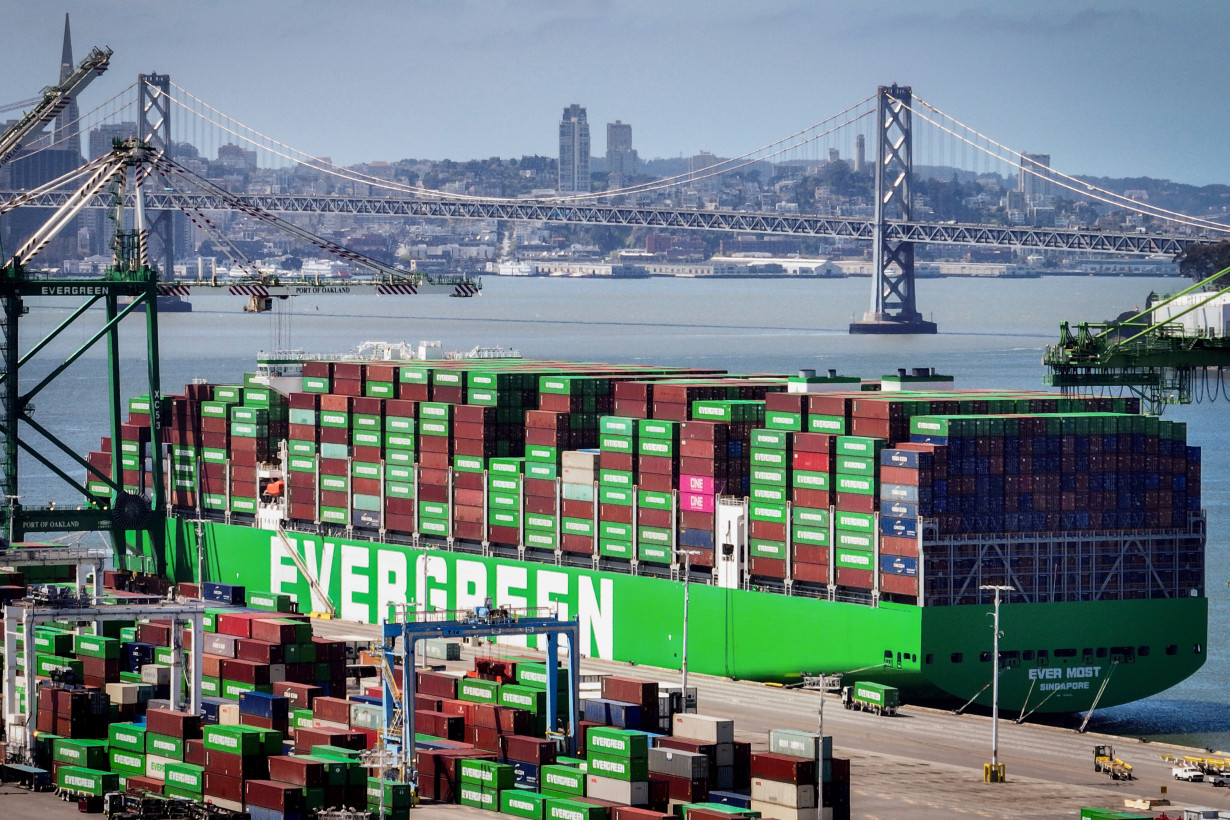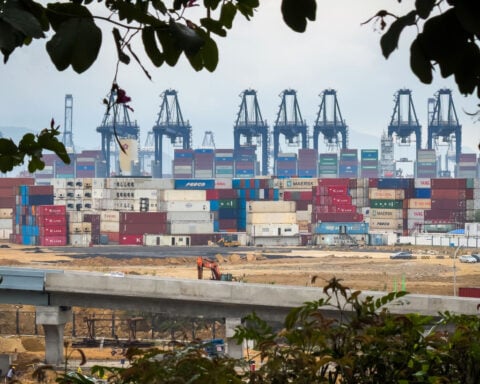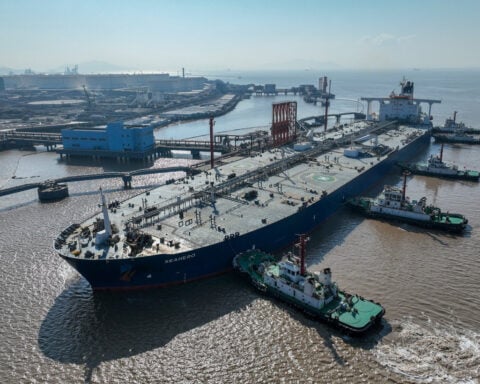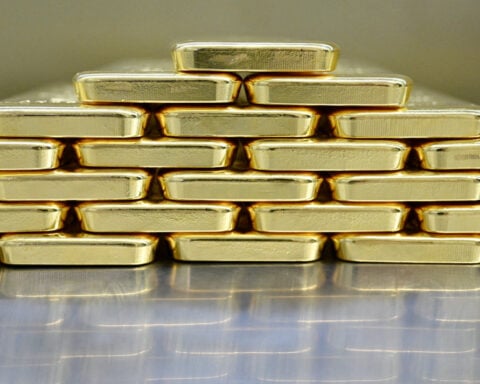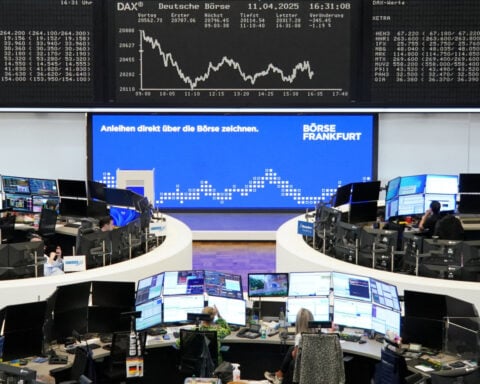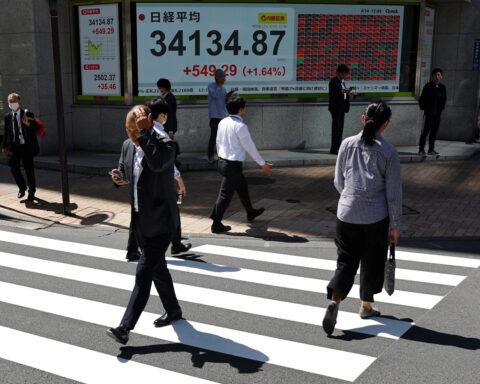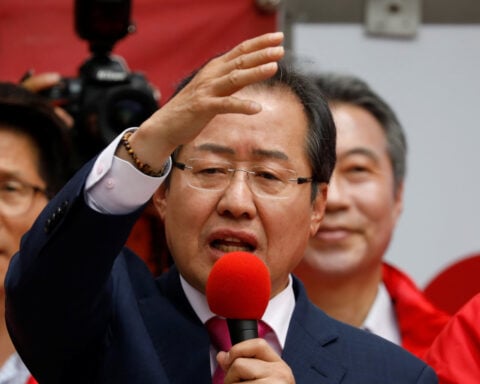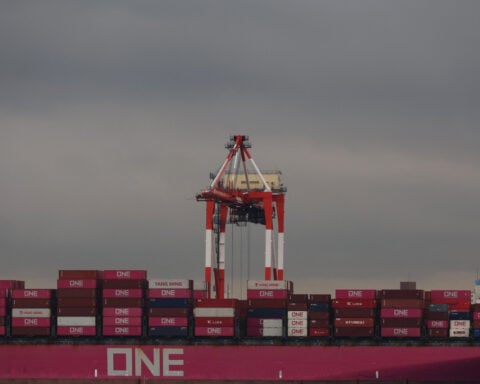WASHINGTON (AP) — After weeks of anticipation and speculation, President Donald Trump followed through on his tariff threats by declaring a 10% baseline tax on imports from all countries and higher tariff rates on dozens of nations that run trade surpluses with the United States.
Global markets cratered the day after the announcement and then fell further when China announced it would retaliate with tariffs equal to the ones the U.S. is imposing.
In announcing what he has called reciprocal tariffs, Trump was fulfilling a key campaign promise by raising U.S. taxes on foreign goods to narrow the gap with the tariffs the White House says other countries unfairly impose on U.S. products.
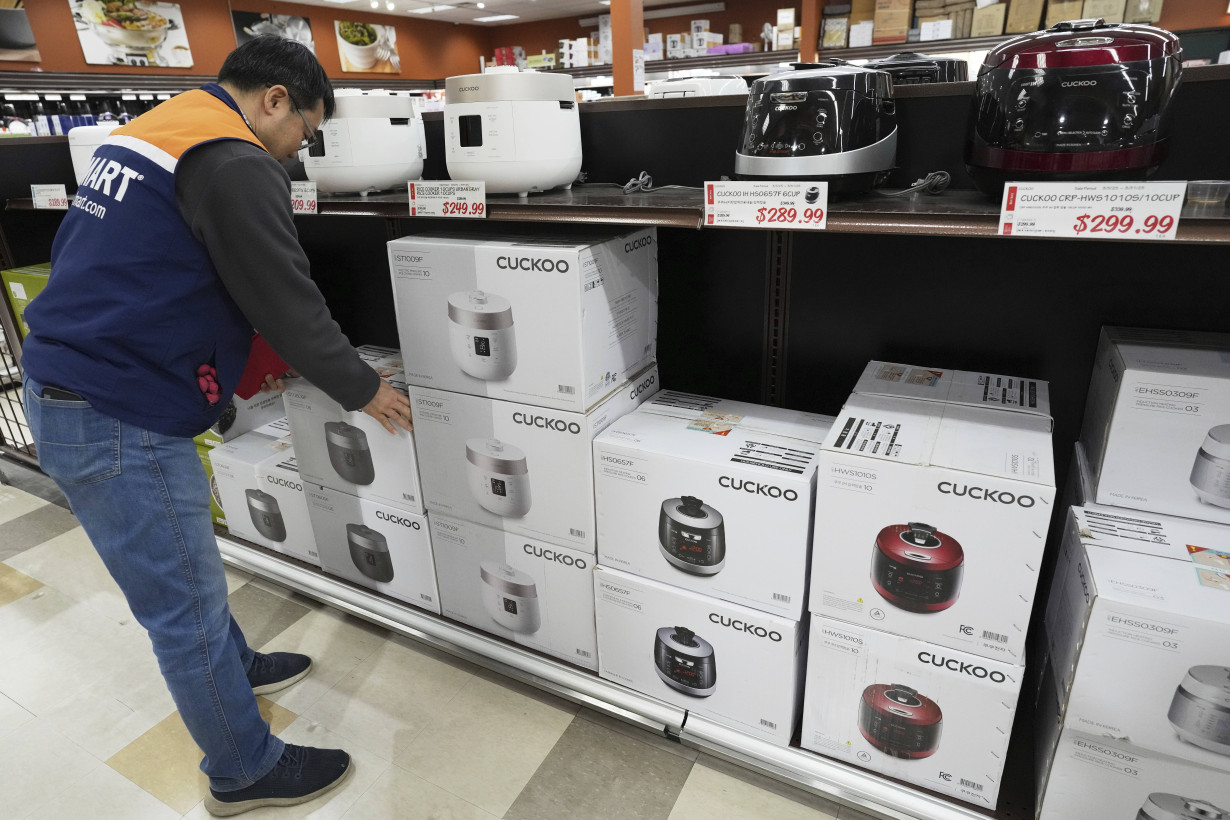
Trump's higher rates would hit foreign entities that sell more goods to the United States than they buy. But economists don’t share Trump’s enthusiasm for tariffs since they’re a tax on importers that usually get passed on to consumers. It’s possible, however, that the reciprocal tariffs could bring other countries to the table and get them to lower their own import taxes.
The Associated Press asked for your questions about reciprocal tariffs. Here are a few of them, along with our answers:
What is Trump trying to accomplish with his tariffs?
It is often unclear what the president’s endgame is, which adds to the uncertainty surrounding his trade wars. He has given different reasons for his sweeping import taxes, and sometimes they contradict each other.
Trump has said that tariffs can raise money for the U.S. Treasury, protect U.S. industries, draw factories to the United States and serve as a negotiating tactic to get other countries to bend to his will, whether it means getting them to reduce their own tariffs or to crack down on the illegal flow of drugs and immigrants into the United States.
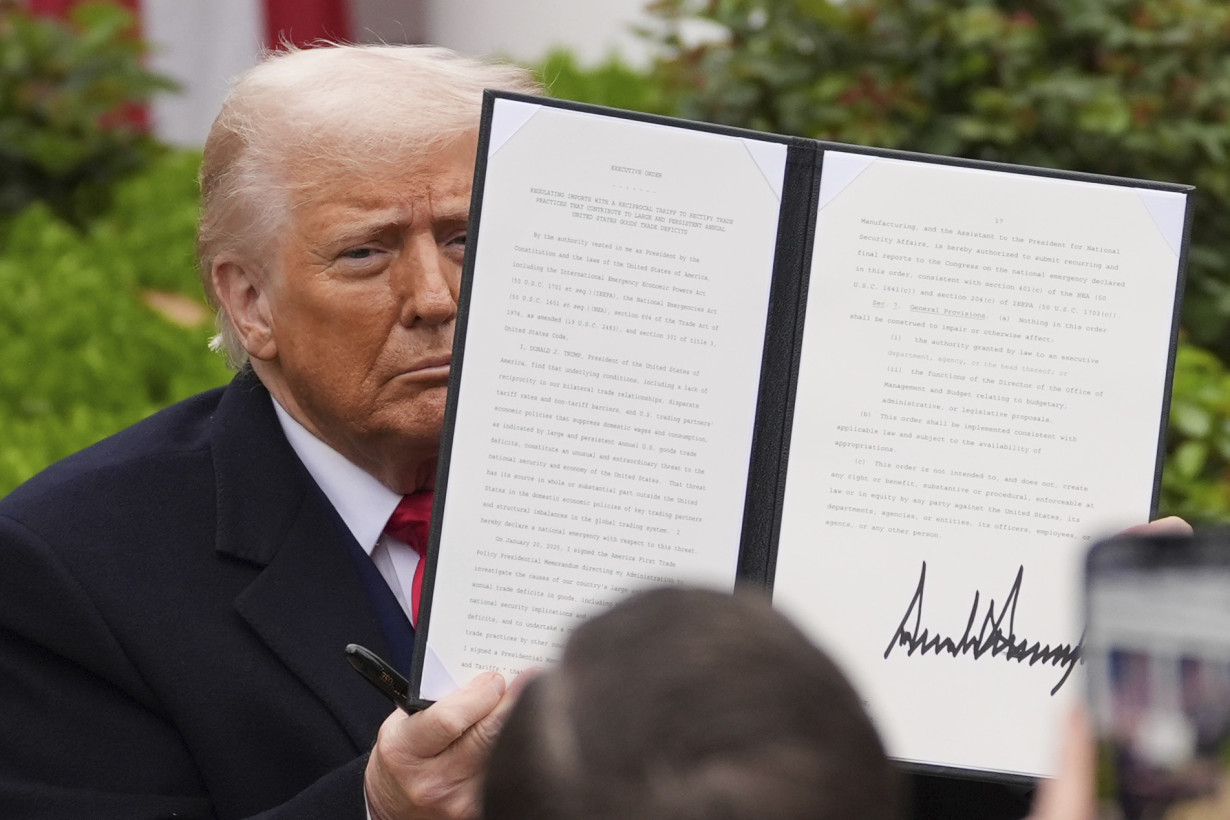
But if tariffs mean Americans buy fewer imports or if companies relocate factories to the United States, then revenue from tariffs will fall, undercutting his plan to use them as a money generating alternative to the income tax.
Trump and his own aides have also offered competing explanations for the sweeping “reciprocal’’ tariffs he announced Wednesday.
The president on Thursday said the levies “give us great power to negotiate’’ and were coaxing other countries into offering to lower their own trade barriers. “Every country is calling us,” Trump said. “That’s the beauty of what we do. We put ourselves in the driver’s seat.’’
The same day, White House trade adviser Peter Navarro told CNBC that the tariffs were meant to stay: The idea is to get companies to produce goods in America, not abroad, bringing down longstanding U.S. trade deficits. “Let me make this very clear,” he said. “This is not a negotiation. This is not that. This is a national emergency.’’
What is currency manipulation?
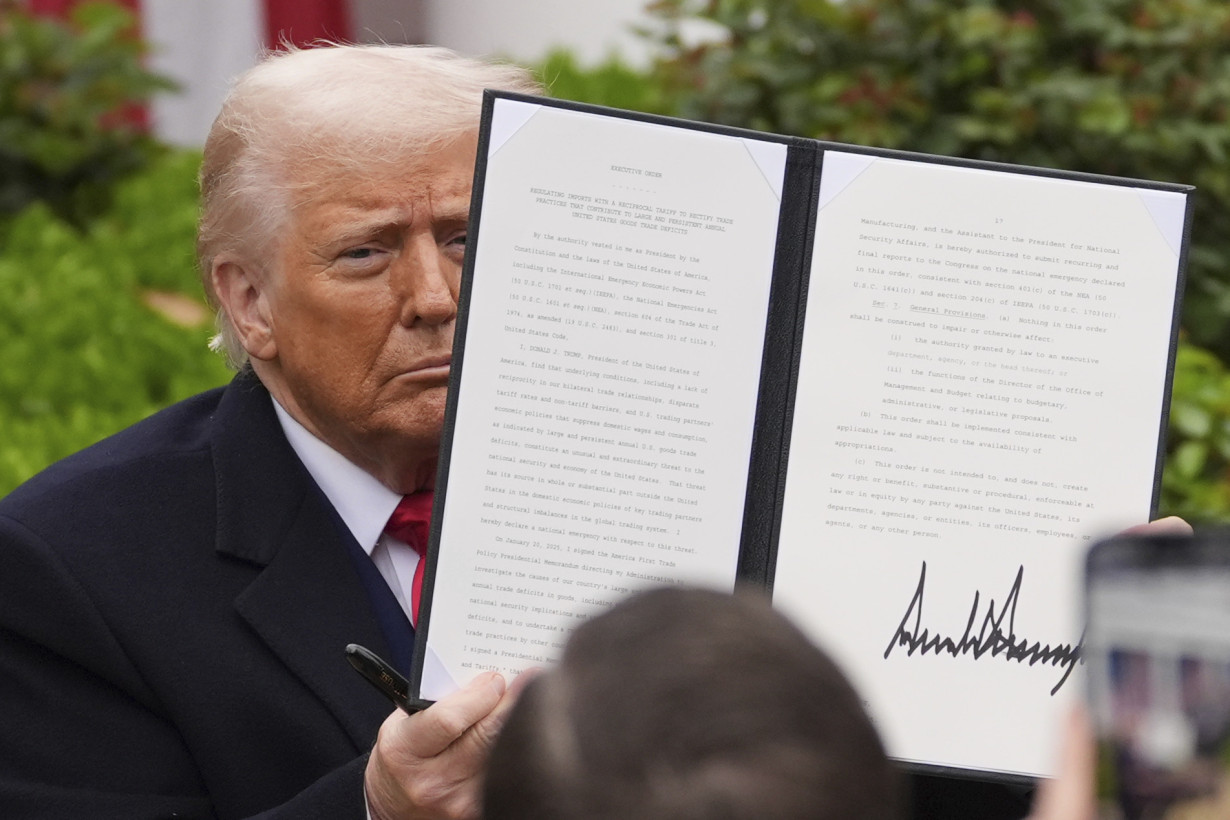
Currency manipulation takes place when a country deliberately pushes the value of its currency lower, which makes its companies’ exports cheaper in foreign markets and gives them an unfair competitive advantage. It can do this by selling its own currency and buying another country’s – usually the U.S. dollar – in foreign exchange markets.
In announcing sweeping tariffs this year, Trump has accused other countries of using this tactic to gain an unfair edge over American companies. China, in particular, was notorious for years for manipulating its currency lower to boost exports. But last November the Biden administration’s Treasury Department concluded that “no major U.S. trading partner’’ had manipulated its currency to gain an unfair advantage in the fiscal year that ended in June 2024.
The U.S. dollar’s status as the world’s “reserve currency’’ – used far more than others in global commerce – tends to keep its value high, which can put U.S. exporters at a disadvantage.
How were the tariffs imposed by Trump calculated? Do other countries really have such high tariffs?
According to the Trump administration, the European Union's tariffs and trade barriers against the U.S. amount to a 39% tariff on U.S. goods, while China's, it says, are 67%, and India's 52%.
Those are much higher than what other sources say. The World Trade Organizations puts the EU's average tariffs on all imports at 2.7%, China's at 3%, and India's at 12%.
The Trump administration says it is including currency manipulation, government subsidies, and other barriers to trade in its calculations. Trump said Wednesday he was being “kind” and then charging half what other countries imposed on the U.S. So the U.S. will as of April 9 impose 20% duties on imports from Europe, 26% on India, and 34% on China. For China, that's in addition to other duties, which means some Chinese goods will face duties as high as 79%.
Many countries do take other steps besides tariffs to restrict access to their markets. The EU, for example, restricts imports of hormone-treated beef from the U.S. And the U.S. government has long complained that China doesn't protect intellectual property, such as software made by American companies.
Still, those factors don't explain how the administration came up with such high numbers for other countries' tariffs. Instead, the White House says it did a simple calculation: It took the size of each country’s trade imbalance on goods with the United States and divided that by how much America imports from that nation.
It then took half that percentage and made it the new tariff rate.
Do US-collected tariffs go into the General Revenue Fund? Can Trump withdraw money from the fund without oversight?
Tariffs are taxes on imports, collected when foreign goods cross the U.S. border by the Customs and Border Protection agency. The money — about $80 billion last year — goes to the U.S. Treasury to help pay the federal government’s expenses. Congress has authority to say how the money will be spent.
Trump — largely supported by Republican lawmakers who control the U.S. Senate and House of Representatives — wants to use increased tariff revenue to finance tax cuts that analysts say would disproportionately benefit the wealthy. Specifically, they want to extend tax cuts passed in Trump's first term and largely set to expire at the end of 2025. The Tax Foundation, a nonpartisan think tank in Washington, has found that extending Trump’s tax cuts would reduce federal revenue by $4.5 trillion from 2025 to 2034.
Trump wants higher tariffs to help offset the lower tax collections. Another think tank, the Tax Policy Center, has said that extending the 2017 tax cuts would deliver continued tax relief to Americans at all income levels, “but higher-income households would receive a larger benefit.’’
How soon will prices rise as a result of the tariff policy?
It depends on how businesses both in the United States and overseas respond, but consumers could see overall prices rising within a month or two of tariffs being imposed. For some products, such as produce from Mexico, prices could rise much more quickly after the tariffs take effect.
Some U.S. retailers and other importers may eat part of the cost of the tariff, and overseas exporters may reduce their prices to offset the extra duties. But for many businesses, the tariffs Trump announced Wednesday — such as 20% on imports from Europe — will be too large to swallow on their own.
Companies may also use the tariffs as an excuse to raise prices. When Trump slapped duties on washing machines in 2018, studies later showed that retailers raised prices on both washers and dryers, even though there were no new duties on dryers.
A key question in the coming months is whether something similar will happen again. Economists worry that consumers, having just lived through the biggest inflationary spike in four decades, are more accustomed to rising prices than they were before the pandemic.
Yet there are also signs that Americans, put off by the rise in the cost of living, are less willing to accept price increases and will simply cut back on their purchases. That could discourage businesses from raising prices by much.
What is the limit of the executive branch’s power to implement tariffs? Does Congress not play any role?
The U.S. Constitution grants the power to set tariffs to Congress. But over the years, Congress has delegated those powers to the president through several different laws. Those laws specify the circumstances under which the White House can impose tariffs, which are typically limited to cases where imports threaten national security or are severely harming a specific industry.
In the past, presidents generally imposed tariffs only after carrying out public hearings to determine if certain imports met those criteria. Trump followed those steps when imposing tariffs in his first term.
In his second term, however, Trump has sought to use emergency powers set out in a 1977 law to impose tariffs in a more ad hoc fashion. Trump has said, for example, that fentanyl flowing in from Canada and Mexico constitute a national emergency and has used that pretext to impose 25% duties on goods from both countries.
Congress can seek to cancel an emergency that a president declares, and Sen. Tim Kaine, a Democrat from Virginia, has proposed to do just that regarding Canada. That legislation could pass the Senate but would likely die in the House. Other bills in Congress that would also limit the president's authority to set tariffs face tough odds for passage as well.

 Trump has begun another trade war. Here's a timeline of how we got here
Trump has begun another trade war. Here's a timeline of how we got here
 Canada's leader laments lost friendship with US in town that sheltered stranded Americans after 9/11
Canada's leader laments lost friendship with US in town that sheltered stranded Americans after 9/11
 Chinese EV giant BYD's fourth-quarter profit leaps 73%
Chinese EV giant BYD's fourth-quarter profit leaps 73%
 You're an American in another land? Prepare to talk about the why and how of Trump 2.0
You're an American in another land? Prepare to talk about the why and how of Trump 2.0
 Chalk talk: Star power, top teams and No. 5 seeds headline the women's March Madness Sweet 16
Chalk talk: Star power, top teams and No. 5 seeds headline the women's March Madness Sweet 16
 Purdue returns to Sweet 16 with 76-62 win over McNeese in March Madness
Purdue returns to Sweet 16 with 76-62 win over McNeese in March Madness
